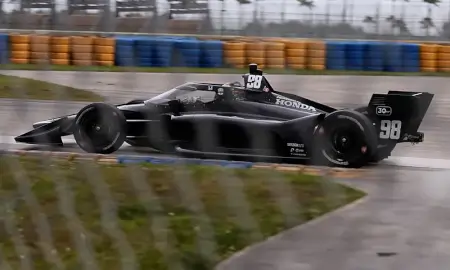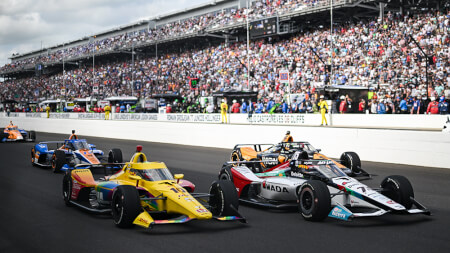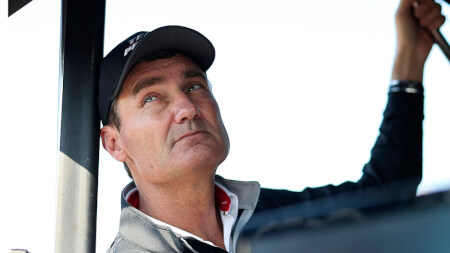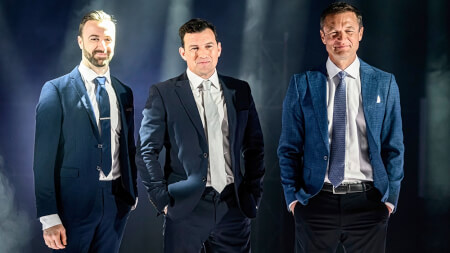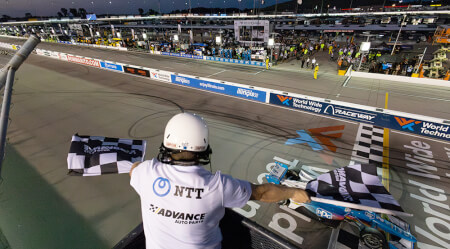February 2nd 2024
IndyCar makes substantial progress with first 2024 hybrid test
It was the kind test the NTT IndyCar Series has been dreaming of since the announcement of its move to hybridization.
Set across Monday through Wednesday in southern Florida at the Homestead-Miami roval, drivers, teams, officials, and the technical partners involved in the making IndyCar’s bespoke energy recovery system left the test with broad smiles on their faces, all testaments to how smoothly the first hybrid test of 2024 went after a problem-filled development process brought a halt to ERS running nearly three months ago.
Fraught with mechanical issues with the motor generator units and its energy store — the supercapacitor packs that sits atop the MGU in the space between the internal combustion engines and transmissions — testing of what IndyCar hoped would be the final version of its ERS package was shut down in early November.
Coupled with ongoing supply issues with the project that was taken over by IndyCar engine suppliers Chevrolet (MGU) and Honda (supercapacitor), the decision was made to refocus the effort to solve the lingering issues and produce an updated final-spec ERS unit that would hit the track in late January. The series also made the decision to delay the shift to hybridization in competition until some point after May’s Indianapolis 500, which gives ample time to continue testing and refine the ERS package while the new season gets underway in March at St. Petersburg.
Altogether, the three-day debut of the latest ERS iteration at Homestead-Miami, with two cars operated by Arrow McLaren and Team Penske for Chevrolet and Andretti Global and Chip Ganassi Racing for Honda, produced some significant firsts for IndyCar in its hybrid preparations.
A combined 1446 laps were turned — 3196 miles — by 10 drivers who cycled through the cars without a single stoppage during the test. By comparison, in the last hybrid test in November, also held at Homestead-Miami, one driver was towed in six times in one day as their car refused to complete a lap, and in general, it was rare for any of the 2023 hybrid test cars to operate without some form of malfunction each day.
The new test with zero interruptions is a major milestone for the series, and another point of pride emerged after one of the drivers slid off of the slippery track surface, nosed their Dallara DW12 chassis into the tire barrier, and stalled the 2.2-liter twin-turbo V6 engine. One of IndyCar’s stated goals with the ERS units was to use the systems to fire the Chevy and Honda motors in the event of a stall and eliminate the need for the AMR Safety Team to dispatch a truck and manually start the cars, and in the instance of this week’s off-track moment, the driver used the MGU to reignite the engine, engage reverse gear, and drive back to the pits unaided.
The last key item of interest from Homestead-Miami, where 10 teams tested last week in non-hybrid configuration, was the speed generated by the 2024-spec ERS units. Kyle Kirkwood, testing with his Andretti Global team using the lightweight bellhousing and transmission that carves approximately 30 pounds from the DW12s, but minus the weight and horsepower punch of the ERS unit, paced the non-hybrid gathering with a lap of 1m11.277s.
In previous hybrid tests, it was common for the heavier car — saddled with roughly 100 more pounds — to lap road courses around two seconds slower than the DW12 in its non-hybrid configuration. This week, newfound speed was on display as Kirkwood matched and slightly eclipsed the 1m11.277s by dipping into the 1m11.1s range in the full 2024 hybrid version of the DW12.
Being 0.1s faster than his best from the Jan. 22-24 during non-hybrid visit to Homestead-Miami isn’t a guarantee that IndyCar’s hybrid cars will perform at the same impressive level at every circuit on the calendar, but it offers hope that outright speed won’t be sacrificed once hybridization goes live this summer.
“The massive amount of work done by all of our partners and the incredible job they’ve done gave us three very encouraging days of testing,” IndyCar president Jay Frye told RACER. “Everybody’s proud to see the project coming together and doing everything that we wanted it to do, but there’s a pretty long way to go so we aren’t celebrating or doing anything like that. Lots we learned and we’re keeping our heads down and pushing ahead.”
For Kirkwood, a two-time IndyCar race winner last season for Andretti, a feeling of overwhelming positivity was shared after climbing from his hybrid test car.
“It was smooth running; we didn’t have a single hiccup all day, or any of the three days,” Kirkwood said. “That’s a huge step in development for the hybrid. Usually, across a few cars, no matter what is inside the car, whether it’s hybrid or just the normal engine, you have some sort of issue between those three days when you’re doing that much running, and no one had any issues. So it was a rather promising test.
“And we’re quick, right? I think conditions from last week to this week were pretty comparable, and to be honest, from the lightweight car with the less power from not having the hybrid versus the heavier car with the hybrid which has more power — at least at Homestead — they’re almost identical. If you look at data and time sheets, the performance is what you’d want to see. It’s a little tiny loss in cornering speed with the heavier hybrid car, but with the extra power, you gain it back in a straight line, and that’s why the lap times were almost a match, but we were that little bit faster even with the hybrid.”
Having spent plenty of time in the slower and recalcitrant 2023 hybrid test car, Kirkwood was astonished to find how different the 2024-spec DW12 felt from behind the steering wheel.
“I was blown away by just how much they’ve developed the hybrid over the past few months, since I’ve last been in the car,” he said. “It’s gotten leaps and bounds better. So it’s promising in the sense that OK, if we’re able to make that much development with just a couple cars on the racetrack for our first test with the updated hybrid, what’s going to happen as the season goes on, and there’s more ideas and more engineers and more drivers working on it to make improvements? Because there’s more to find out of it.”
IndyCar has yet to lock in the final amount of electronic horsepower the ERS units will offer on demand, but something in the 60hp range is likely, which will add to the 725-750hp available in road, street, and short oval trim.
Once somewhat lumbering and lazy in the corners, the combination of the new lightweight drivetrain components, ongoing weight reduction efforts with the ERS units, and the pushbutton power shot through the rear tires from the MGU has radically altered Kirkwood’s views on IndyCar’s hybrid chassis package.
“The current performance has shocked me,” he said. “You’d expect a car with the total hybrid power it puts out, which is a decent amount, but isn’t crazy, to suffer because of the added weight. Adding weight is really never a positive, but we’ve gotten the performance back out of it. I didn’t really feel a difference between the two cars from last week to this week, and that was the closest comparison that I’ve ever had between the two.
“Before, I’ve got to be honest…it was a pretty serious drop-off that wasn’t a lot of fun to drive. This was the first time that I’ve been in the hybrid car that I’m like, ‘OK, this is pretty cool.’”
For more information: www.racer.com
For more information: www.racer.com
